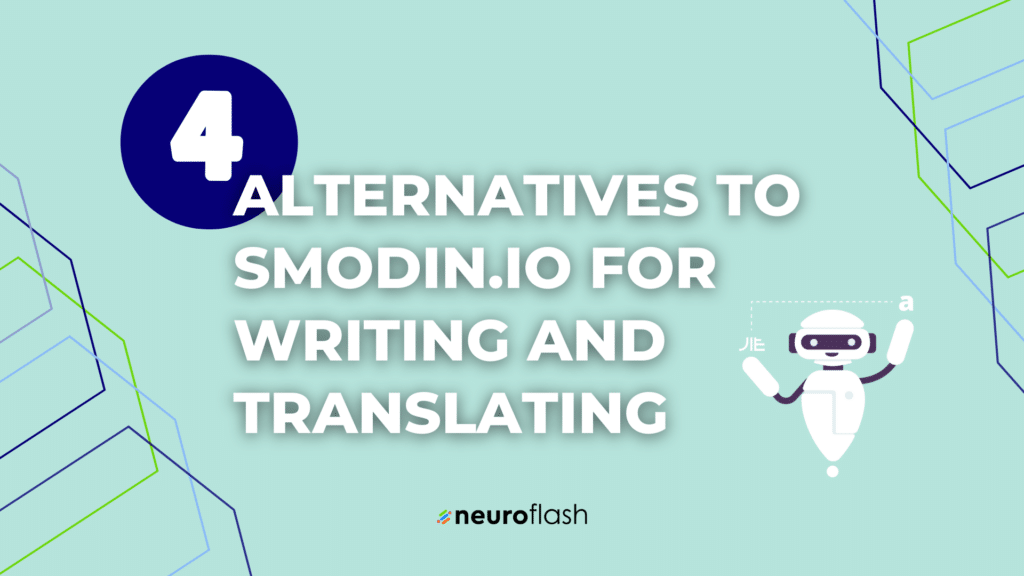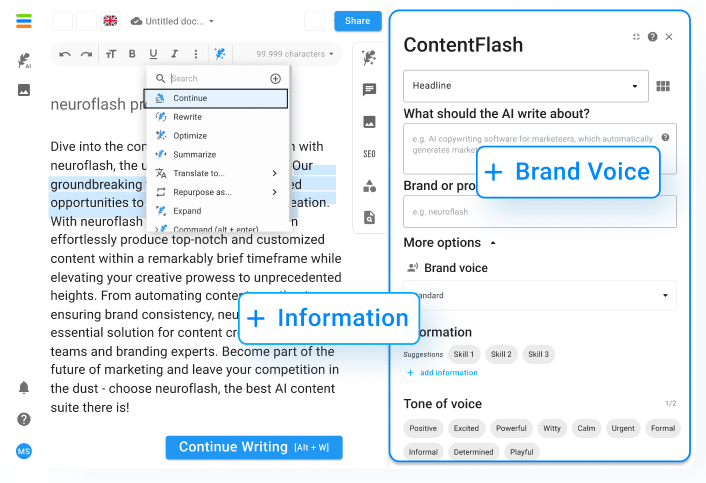Content Is Product And Product Is Content: Why Deeper Alignment Is
The article will discuss the shift in marketing, content creation, and product development that now suggests that both the content and the product are now equally important. This shift has two key implications for marketers. Firstly, this shift creates new opportunities to engage with customers by creating custom, personalized content. Secondly, it requires a shift in how marketers create content because they must think beyond just making content to sell products.

This is what AI writes about "Content is Product and Product is Content: why deeper alignment is"
The Future of Higher Education What is higher education? What does it mean to be a student in the 21st century? What are the benefits of attaining an undergraduate degree in today's society? The following article will explore these questions in order to better understand how the current trends in the American college landscape are shaping our society. A dictionary definition of higher education includes "instruction at a university or college level" and "knowledge acquired through study." Therefore, when looking at the future of higher education, it is important to consider both the definition and what that means for students in today's world. This can be accomplished by looking at economic, social, and technological trends to understand how they may affect higher education. Economic Trends: Since 2008, tuition rates have continued to soar across the country. This has led to about 10% of all undergraduates taking out loans in order to fund their education. The average borrower graduates with over $30,000 in debt - up from $10,000 in 2003-2004 (Kaminer). This trend has led many to question whether college is worth its cost because acquiring an undergraduate degree no longer guarantees an increase in salary. However, others argue that there are still benefits for having an undergraduate degree despite the high costs. For example, employers often list bachelor's degree as a requirement for employment (Kaminer). Furthermore, there are also many jobs that require an undergraduate degree but not necessarily a graduate degree (Huffington Post). These jobs tend to pay more than jobs requiring only a bachelor's degree (Huffington Post). All these factors lead some people to decide that while college may not be worth it for everyone, it is still worth it for them. They believe that being able to attend college is better than not being able to go at all. Social Trends: There are many people who believe that there are too many students attending college and that this leads to an increase in tuition rates because colleges are competing with one another for more students (Kaminer). Others say that having more college graduates decreases unemployment rates by providing more spending power for consumers which helps create jobs (Kaminer). To make matters even more confusing, some economists believe that increased tuition rates lead to increased enrollment because many parents see these high prices as necessary investments into their children's futures (Kaminer). So while getting a diploma may be expensive, some parents see it as an investment into their child which could give them opportunities later on in life. Technological Trends: The ever-increasing access of internet information has changed how people get their knowledge. The number of Americans living without broadband Internet access decreased from 14% in 2000 to 2% in 2014 (Pew Research Center). But what does this mean for higher education? It means that students now have greater access than ever before to resources such as lectures from Ivy League schools and textbook content from publishers such as McGraw-Hill Education or Pearson PLC. In addition, most universities now offer free online courses which allow them the opportunity to expand the amount of knowledge they provide without increasing their physical presence on campus. Some people would argue that this change makes going to a public university unnecessary because public universities do not offer these types of services but rather base their classes on lectures and textbooks rather than distance learning methods such as YouTube or Skype tutorials from Ivy League schools. But those who advocate against online courses say that attendance is important because you learn different skills from being on campus with other students instead of just having lessons delivered via computer screen or tablet screen alone. As technological advances continue towards future generations with faster internet speeds and quicker downloads as well as new innovations such as virtual reality classrooms and augmented reality classrooms, we can expect changes within higher education institutions which will likely bring about new ways of teaching and accessing information.
What are related questions around "Content is Product and Product is Content: why deeper alignment is"?"
• Why is content product?
Content is product because it can be sold as a subscription, as a one-time payment, or as a paid app. Nearly every company now has a content marketing strategy and their product is the content they produce.
• What does this mean for brands?
This means that consumers are more open to new brands, and are less loyal to brands. This is good for companies who are starting out, but bad for the company whose brand is well established.
• Why is content product important for brands?
A lack of content product (content marketing) in today's market is not only detrimental to the brand, but could also lead to a decline in revenue. Content product is an essential part to any brand's marketing plan because it attracts new customers and provides potential customers with information about the company. It's also free exposure for whatever you're selling, meaning that you don't have to pay for ads or media coverage. Content product is the best way for people to learn about your brand so they can decide if they want to purchase anything from you.
• How do you measure the impact of content on conversion rates?
There are many different ways to measure the impact of content on conversion rates. A common way is to report how much traffic was generated by the content in question. This could be done by counting how many visitors clicked through to a particular page, or how many people downloaded an e-book, for example. There are also ways to measure conversion rates specifically for certain pages or pieces of content. You can measure how long it takes someone to complete a form after reading a page of text, for instance. Lastly, it is possible to measure conversions based on what content is popular with consumers. One way to do this would be to examine which articles get the most traffic on the site in question. Advertisers using Google Adwords could also use conversion rate data in order to determine which keywords lead people to their website who are most likely to buy their product or service.
• What are some ways to measure the effectiveness of your content strategy?
-Establish goals for your content strategy. -Measure the effectiveness of your content by tracking what you are trying to accomplish. -Measure engagement with your content. This can be done through Google Analytics, social media analytics, or other methods. -Find out what your audience wants and believes by using surveys, interviews, or focus groups. -Figure out which type of content is most effective for your specific goals and target audience.
• How might marketers create more compelling digital experiences with deep alignment between their content and products?
Marketers can create more compelling digital experiences by using a variety of techniques to create a deep alignment between their content and products. For instance, marketers might start by taking a look at the content they are creating, and determining if they are creating enough content that is relevant to the product or service. In addition, marketers might also want to look at how their content is presented. If the consumer has a difficult time understanding the information they are viewing, then there is no chance that they would be compelled to purchase anything from those businesses. Finally, marketers need to make sure that their content is targeted appropriately. If a company's digital presence only has information about their products and not much about the customer's life, then it will be difficult for them to create a meaningful experience for their customers.
How neuroflash's AI copywriter can help
Content is Product and Product is Content: why deeper alignment is important. The word content refers to the digital product such as websites, social media posts, articles, e-books, blog posts, and videos that businesses produce for marketing purposes. The word product refers to the physical goods and services that a business sells to customers.
Summary
'Content is Product and Product is Content: why deeper alignment is.' This article discusses the need for an even more in-depth alignment between content and product. Brands are increasingly looking to integrate their content with the product, so the article notes that they will have to create more content that speaks to both audiences.






















